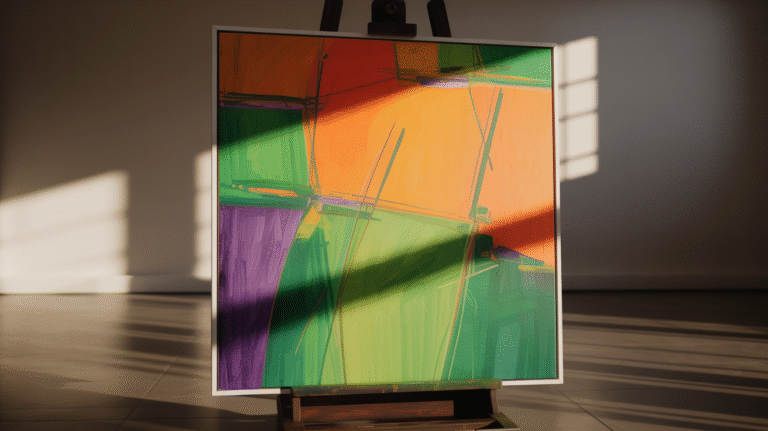As the leaves change and the air turns crisp, it’s the perfect time to embrace the beauty of fall through your creative projects. Fall painting on wood brings a unique charm to your home decor and allows you to express your artistic side seasonally. There are countless themes to explore, from vibrant pumpkins to picturesque autumn landscapes.
Fall Painting on Wood
You don’t need to be a professional artist to create stunning fall-themed wood art. With just a few supplies and some inspiration, you can turn plain wooden pieces into beautiful decorations that celebrate the season. Whether you’re looking to craft a lovely centerpiece for your dining table or a thoughtful gift for a friend, fall painting projects offer endless possibilities.
Preparing Your Workspace and Materials
Choosing the Right Wood
Selecting the right type of wood is crucial for achieving the best results. Ideal woods for painting include poplar, pine, and birch due to their smooth surfaces. Avoid using woods with excessive knots or rough textures.
If you’re working with reclaimed wood, inspect it for damage or signs of decay—prep by sanding any rough patches and cleaning away dirt to promote better paint adhesion. Consider the final look you want. Different woods can affect the appearance of the paint finish. Choose wisely based on your vision!
Gathering Supplies
Collecting the necessary supplies will streamline your painting process. Here’s a quick list of essentials you might need:
- Sandpaper (medium and fine grit)
- Paint primer
- Paintbrushes or rollers
- Drop cloths to protect surfaces
- Masking tape for clean edges
- Cleaner or degreaser for surface prep
Having your supplies organized will prevent disruptions. Double-check that you have enough paint for your project to avoid last-minute runs to the store.
Setting Up Your Work Area
Creating a designated workspace is crucial for a pleasant painting experience. Start by clearing a flat surface, preferably outside or in a well-ventilated area. This will help minimize dust and odors while you work.
Use drop cloths to protect your floors or work surfaces from spills. If you’re using spray paint, set up an area where airflow can carry away fumes and overspray. For convenience, keep all your tools within arm’s reach. Properly labeling brushes and containers can save time and effort as you move through your painting process.
Overall, a tidy and prepared environment enhances your creativity.
Fall Painting Techniques
Sketching Your Design
Begin by sketching your design lightly on the wood surface. Use a pencil that can be easily erased or is light enough not to show through your paint. Focus on key elements like trees, leaves, and any foreground features you want to highlight.
Consider using reference images to guide your sketch. This can include photographs of autumn landscapes or fall motifs, offering inspiration and accuracy. You can take your time during this step, as a well-planned composition will make painting easier and more enjoyable.
Applying Base Colors
Once your sketch is complete, start applying your base colors. Choose acrylic paint for its versatility on wood. Begin with lighter shades, such as soft blues or warm beiges, to build your background.
Use wider brushes for large areas and smaller ones for details. Focus on rich oranges, yellows, and reds for the fall landscape, layering them to create depth. Allow each layer to dry before applying the next to avoid muddying your colors.
Creating Fall Motifs
After the base layer is set, it’s time to create specific fall motifs. Think of leaves, pumpkins, and even the silhouettes of barren trees against the sky. You can use a sponge or a stencil to create texture in the leaves, giving them a more natural look.
Mix different shades of green, orange, and brown for your motifs. This variation will help your painting appear more dynamic. Consider adding a splash of gold or bronze for a glimmer effect, capturing the beauty of autumn light filtering through the trees.
Adding Details and Finishing Touches
Details are crucial for bringing your painting to life. Use smaller brushes for intricate components like veins in leaves or the textures of tree bark. Fine lines can add definition and contrast to your pieces.
Don’t forget to step back and review your work. This perspective helps identify areas needing more detail or balance. A final coat of acrylic sealer can enhance the vibrancy of your colors while protecting your artwork from damage.
Frequently Asked Questions – Fall Painting on Wood
What are some beginner-friendly fall painting ideas for wood?
Consider creating simple designs like pumpkins, leaves, or acorns. You can use stencils to make the process easier. A painted wooden sign with your favorite fall quote is another great option.
How can you make fall paintings on wood appealing to children?
Use bright, vibrant colors that reflect the season, such as oranges, reds, and yellows. Incorporating fun patterns and inviting children to explore different textures can make the artwork more engaging.
What techniques can be used to achieve easy fall-themed paintings on wood?
Sponge painting or using a brush to create layered effects can produce beautiful results. Additionally, you might try masking tape to create crisp lines or use stamps for fun patterns.





